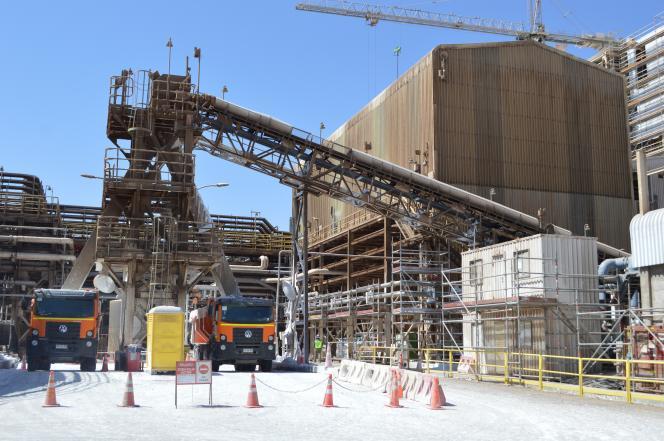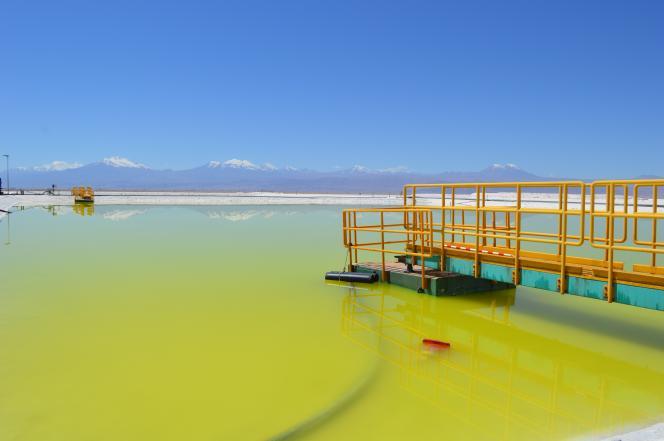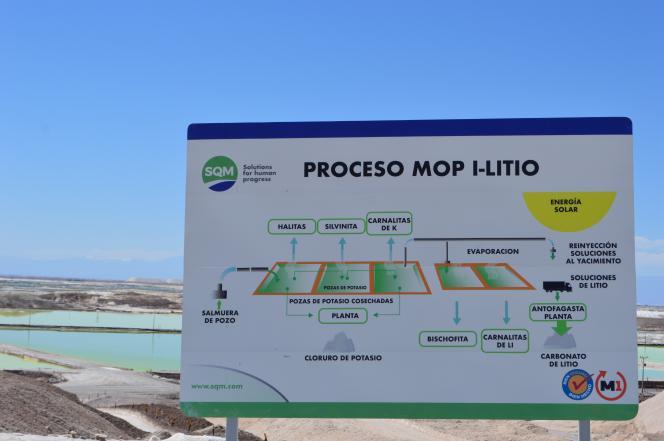
Chile’s National Lithium Strategy: Key Governance Questions
Español »
The announcement of the launch of Chile’s lithium strategy raised several key questions about the future of lithium mining. What will the development of public-private partnerships look like? How will fiscal and transparency rules be applied? And how will citizen participation be ensured?
On Thursday, 20 April 2023, Chile’s president Gabriel Boric launched Chile’s "National Lithium Strategy," or #LitioporChile, during a live national broadcast. The following day, president Boric elaborated on the strategy during another speech at the Huanchaca Ruins Monument in Antofagasta.
Despite this long-awaited announcement, no documentation with a detailed assessment or goals was shared, with just general outlines of the strategy communicated. The government has only responded to concerns and gone deeper into the proposal through media interviews with authority representatives.
Key points shared during the announcement of the new strategy included plans to establish a new national lithium company, with a draft law to be approved by congress, a new institute for lithium and new technologies, the promotion of state participation in the operations of Salar de Atacama through association agreements with companies with current exploitation contracts, the expansion of exploration and operations to new salt flats, a fiscal rule to limit the expenditure of lithium revenues and the creation of a network to protect salt flats. The government is yet to confirm dates and details for the convening of a participatory process and dialogue with key stakeholders.
As it sets out its national lithium strategy, the government of Chile must address four key questions on the future of the process.
Toward public-private partnerships rather than nationalization
After President Boric's announcement, international media reported that Chile would nationalize its large lithium industry, following in the footsteps of other countries in the region, including Bolivia and Mexico. The government responded during a Bloomberg interview with the Minister of Mining, Marcela Hernando, in which she explained that there are no plans to nationalize. In addition, Kent Masters, CEO of Albemarle, one of Chile’s two lithium producers, shared that “they [international media] are saying that it’s nationalizing lithium, which is not the case.”
While President Boric's speech referred to the “Chileanization” of copper in the 1970s—a progressive nationalization of the country’s copper production—there are no concrete mentions of nationalization in the new lithium strategy. As a strategic natural resource in Chile, lithium is not subject to concessions by law. The two operations currently authorized to extract lithium in Chile, Sociedad Química y Minera (SQM) and Albemarle, are private and operate through leasing contracts. Both companies were cautious following the president’s announcement. But clarifications from the authorities that they would respect existing contracts and that talks would start closer to their completion (2030 for SQM and 2043 for Albemarle, long after the current government's term) indicate that Chile’s lithium strategy is unlikely to lead to a nationalization of the lithium industry. SQM even announced a USD 3.4 billion investment plan for 2025.
Besides, creating a new state-owned lithium company would require congressional approval. The government has previously faced difficulties in passing key projects, such as the tax reform, which was ultimately rejected, and with the part on royalty substantially amended to ensure it would pass through congress.
An interpretation of President Boric's statement is that the state intends to ensure active state participation in the lithium industry through existing state companies Codelco and Enami in the form of public-private partnerships. This is already the case for the country’s copper sector, where both companies participate on a minority basis with private companies in operations such as El Abra (49 percent of Codelco), Quebrada Blanca (10 percent of Enami) and Los Bronces (29.5 percent of a joint venture between Codelco and Mitsui). However, a majority stake by state-owned companies would be unparalleled, but, according to the minister of finance, such large stake would not apply to all projects, only to those of “strategic significance.” Clarifying what is meant by that definition will help understand how the government’s lithium strategy intends to approach public-private partnerships.
Fiscal rules and transparency
A noteworthy part of the announcement on Chile’s lithium strategy was the proposal to introduce a fiscal rule with a cap on lithium revenue expenditures, generating savings for social and technological investments. The president referred to a note from the autonomous fiscal council—an independent advisory group of the ministry of finance—published in February this year recommending this approach. The fiscal rule for lithium should form part of a sovereign savings and stabilization fund that can help face the volatility of revenues and provide sustainable financing towards its stated purposes, including social and technology investments.
The note also highlighted the need for increased availability of official information and improved fiscal transparency standards around lithium revenues.
With this in mind, the explicit reference to Chile's adhesion to the EITI (Extractive Industries Transparency Initiative), stating that “the process will begin to incorporate Chile to the EITI, to ensure greater transparency and probity in all extractive industries including lithium mining, meeting the highest international standards” is encouraging.
An important objective of the policy agenda should therefore be on turning this intention into reality, tackle issues around opacity and lack of access to information in the sector, including lack of transparency around the negotiation and awarding of contracts, especially considering planned expansions to new salt flats. This would be in line with the recommendations of the Expert Group for the Prevention of Corruption in Energy Transition Mineral Supply Chains, led by NRGI in coordination with EITI and OECD.
In this context, an important objective of the policy agenda should be on turning this intention into reality, tackle issues around opacity and lack of access to information in the sector, including lack of transparency around the negotiation and awarding of contracts, especially considering planned expansions to new salt flats. This would be in line with the recommendations of the Expert Group for the Prevention of Corruption in Energy Transition Mineral Supply Chains, led by NRGI in coordination with EITI and OECD.
The functioning of the participatory process, the invitees, and the real possibilities of influencing the definition of the future policy will be crucial elements to ensure good governance of the strategic reform process.
Research institutes
The direction of the current strategy is to aim for a sector with higher value addition. To this end, the government is proposing creating an institute of lithium and new technologies, which will be based in Antofagasta.
One of the provisions of the updated lithium contracts is that mining companies would finance technology institutes in Chile focused on research in energy, low-emission mining and the battery industry, with contributions of between $10 million and $18 million.
On the other hand, there are already specialized institutes part of existing national institutions, as is the case of the Advanced Lithium Research Center of the Universidad de Antofagasta.
Given this context, continuing and deepening funding of research, development and innovation programs already in place, to which different institutions can apply, seems preferable to creating a new institution from scratch.
The announcements made in April are just the start of a long and complex process, which will require several different steps and approaches. The success of this strategy requires full participation and dialogue with various stakeholders. The national lithium strategy announcements provide broad guidelines, giving a general idea of the political direction the government wants to follow for lithium. However, the government still needs to define many key aspects to address several of the open questions around the lithium strategy. The government must take the steps needed to promote a process that is seen as legitimate by the different actors involved in the lithium sector.




